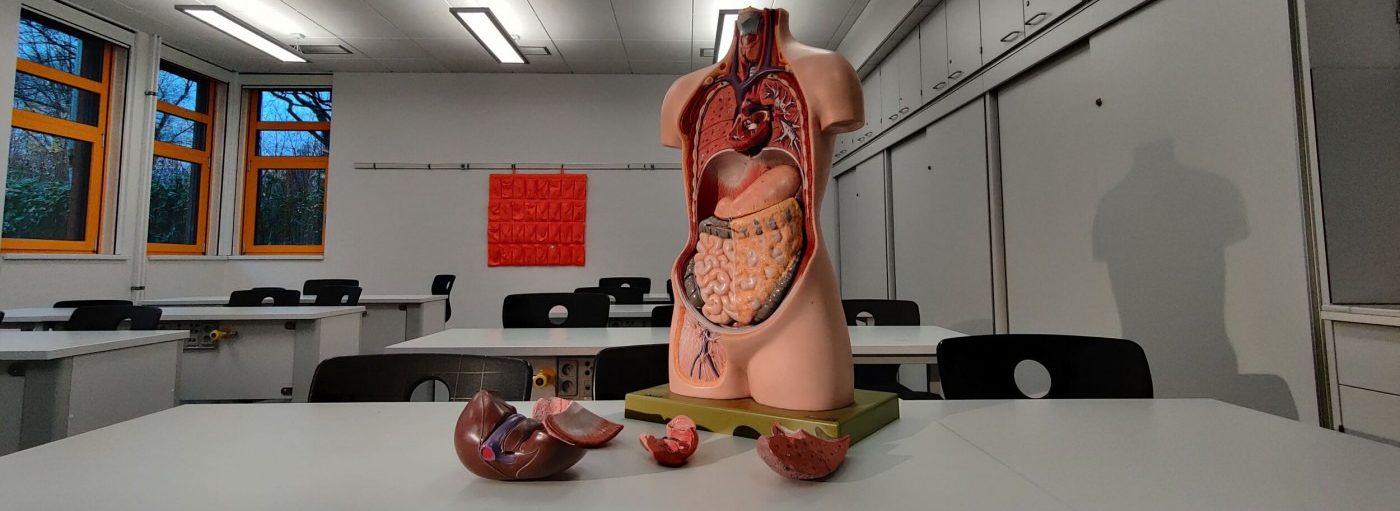Simplifying the inexplicable: the challenge and beauty of teaching science
Next year, after finishing my degree, I will train to become a secondary school science teacher. This is very exciting, but also daunting: aside from the boisterous and unpredictable behaviour of teenagers, the hefty workload, and the high–pressure school environment, I will have the unenviable task of taking complex scientific ideas and simplifying them to be easily understood by the most reluctant learners. This is a daily task for millions of teachers around the world. How do you take something that, at its very limits, is inexplicable to experts, and make it simple?
To answer this, let’s begin by looking at an example of how science is translated from the frontiers of research down to the whiteboard. Atoms are, of course, the fundamental building blocks of the universe. In school, you are told that atoms are made up of a central nucleus containing positively charged protons and neutral neutrons, all orbited by electrons. Electrons are negatively charged, and in an atom, there will be the same number of electrons as protons. None of this is wrong exactly, but it is an enormous simplification. It is what we call a model — a translation of reality to something digestible and interpretable by all, but does not even begin to reflect the complexities of the unabridged natural world.
No-one — including the most accomplished chemists and physicists — can really claim to understand the atom
If you study chemistry to a higher level, you likely encounter a more complex atomic model. Here, we discover that electrons do not orbit the nucleus like planets around the sun. Instead, they occupy strangely shaped regions around the nucleus termed orbitals. These are areas without distinct boundaries, with a high probability of being occupied by one or two electrons at any given time. And, of course, these electrons can act like both waves, and also particles simultaneously. And are tens of thousands of times the size of the nucleus. And are actually far from the nucleus. Here we can see that layers of detail and confusion quickly build up! At this point, in fact, we get into the realm where no-one — including the most accomplished chemists and physicists — can really claim to understand the atom.
Something being both a wave and a particle at the same time is absurd, and illogical without diving deep into the mysterious world of quantum physics. In fact, there is a good chance we will never truly understand atoms. After all, proton, neutron, and electron are just terms we’ve chosen to identify what are simply miniscule ripples in how we connect space and time. If we will never truly comprehend how the universe works, what is the point of trying to build an increasingly complex and inexplicable model to explain it? In fact, what is the point of science at all?
Our experience and sensing of the world only reflects a tiny, understandable interpretation of the vast chaos encompassing us
We can answer this: Science has never really been about completely explaining every aspect of how the universe works. For centuries, philosophers have observed that our experience and sensing of the world only reflects a tiny, understandable interpretation of the vast chaos encompassing us. Science does not seek an explanation of the unfathomable. It simply exists to create a canvas through which we can appreciate the beauty of the universe. Additionally, scientific models are tested by their ability to make predictions and their ability to be disproved — an important aspect of developing scientific ideas, known as falsifiability. Once a model ceases to be able to make useful predictions, and therefore to adequately explain a phenomenon, then it must be developed and improved upon. The important thing about these models is: they are always useful, yet never correct. They allow us to make progress, to invent research, to cure disease and improve lives, but they do not aim to solve the unsolvable. As evolutionary biologist Richard Dawkins once said, in answer to the question of why we should believe in science, “it works”.
I once overheard someone explaining that the reason they did not complete their training to become a science teacher was because you effectively lie to students. You could not give them a full, degree–level explanation of what you were teaching them. You had to simplify. I think that, here, they were mistaken. The truth is, even the science taught in universities is ‘wrong’. It is always simplified, always a model. Otherwise, there would be no need for more research. The beauty of teaching is in taking the mystery and chaos and inexplicability of the universe and showing students the simple ways in which a fraction of it can be understood, and used to understand and improve the world we live in. After all, they don’t need to understand all of science, just enough to believe that “it works”.

Comments